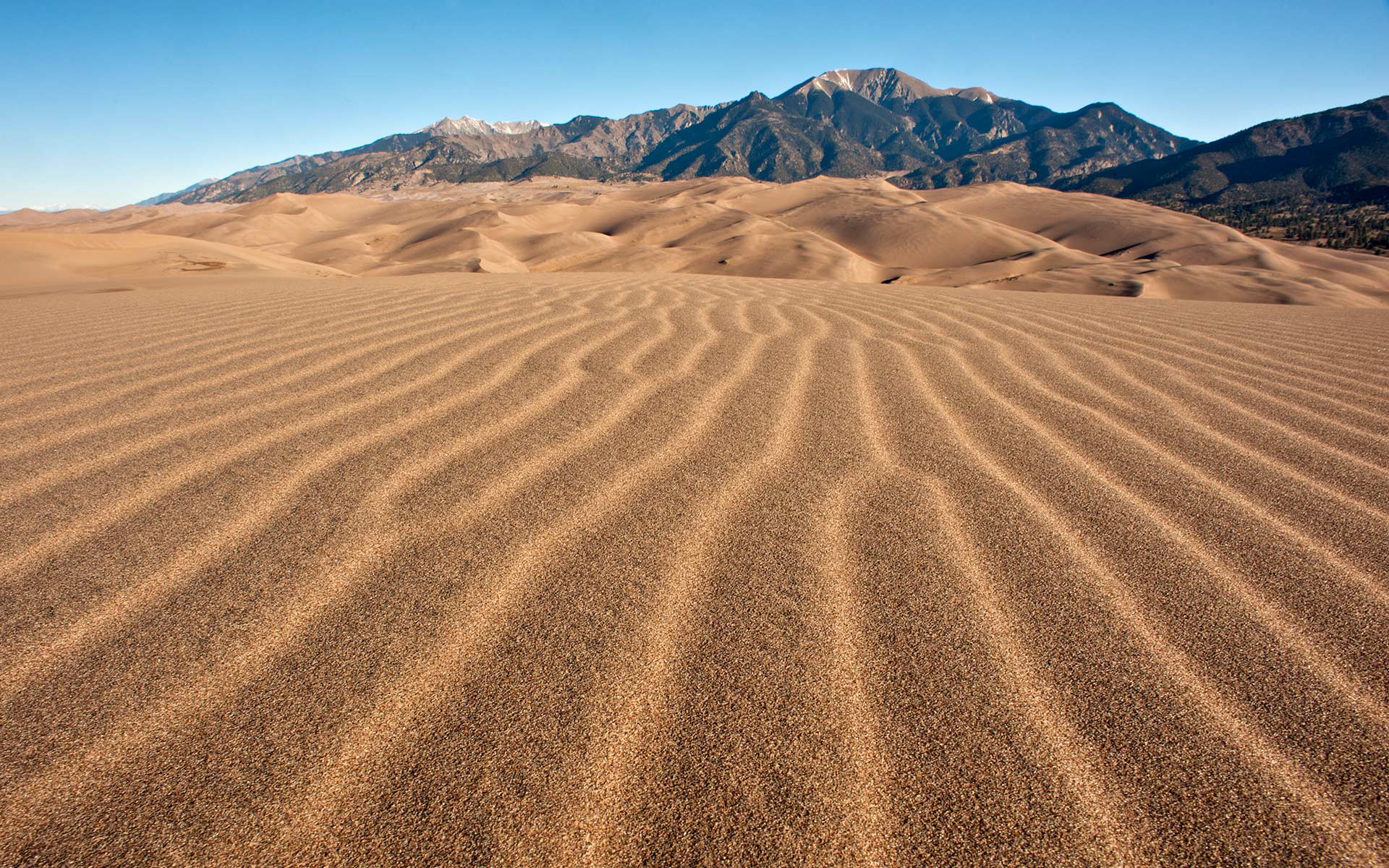
- Destinations
- Colorado
- Great Sand Dunes NP
Great Sand Dunes National Park
There are several places in the American West or Southwest which have very attractive sand dunes. Each of these places have their distinct character. The ones I visited so far are the Stovepipe and Eureka Dunes in Death Valley National Park, the Kelso Dunes in the Mojave Desert and finally the Great Sand Dunes National Park located in the central-south area of Colorado. The Great Sand Dunes have some elements that distinguish them as something very special. First, these are the tallest sand dunes in North America, reaching heights close to 750 feet (250 meters). Second, they are the only ones that have a creek, Medano Creek, flowing through them, allowing for an interesting desert-flower blooming period in Springtime. Third and last, the Sangre de Cristo mountain range in the background gets a nice cap of snow during winter and with some luck even during spring, augmenting the contrast between the starkness of the dunes in the foreground and the snow covered mountain peaks in the background.
Getting there:
The access is fairly easy and makes a very nice and pleasant drive through the high and vast San Luis Valley. You will enter this valley either from the East driving US 160 coming from Walsenburg or from the West coming from Alamosa.
The beauty coming from Walsenburg is the steep climb through mountains with volcanic origins until you reach the plateau of the San Luis Valley at Fort Garland. At this little town I would recommend a stop at a small cafe on your right, opposite of the US 159 junction. Have a simple meal here; it has a very nice western ambience. You then continue driving to the West to finally enter CO 150 make the last leg, until you see the Sand Dunes appearing more and more dominantly to the right of the horizon, at the bottom of the Sangre de Cristo Mountains.
If you are coming from Alamosa I recommend coming on US 17 via Mosca and turning east into 6 Mile Lane – which is 16 miles long. This is quite a scenic drive, with a bonus when visiting the San Luis State Park, an excellent area for bird watching during high season.
The Great Sand Dunes National Park is a bit secluded and you need to think before you go to make sure that you will have a place to stay overnight. Alamosa has several motels, but the drive to the sand dunes takes at least an hour. The other options are the Pinyon Flats campground in the premises of the National Park or the private Great Sand Dunes Lodge, just outside the park. The lodge has few rooms available and you might want to reserve well in advance.
Taking shots:
The Great Sand Dunes offer a majestic sight both from afar and at close range. From afar, the tall sand dunes strike a fantastic profile in front of the snow capped peaks of the Sangre de Cristo Mountains and lend themselves to superb telephoto photography. From a short distance, the rich brown sand creates a fantastic contrast with the abundant foliage of the Medano Creek’s riparian area, which turns golden in early fall. On top of the dunes, you’ll be rewarded with the view of a vast area of sand with superb crests and ripples, stretching for what seems forever at the foot of the mountains.
To climb the dunes it would be beneficial to be in good physical shape, as it is a fairly strenuous exertion at an elevation of 8,000 feet (2.500 meters). If you prefer to take it a bit more easy, I recommend walking up the Medano Creek riverbed. The creek is wide at the crossing but gets progressively narrower.
Photographers who do not want to walk or carry heavy or fragile equipment can drive their 4WD vehicle on the 12-mile long Medano Pass primitive road. Medano Pass provides spectacular views from the back of the sand dunes. However, be advised that this road has deep sand and beyond the ‘Point of no Return’ things get very adventurous. It might be necessary to reduce the air pressure in your tires. Additionally during the snow melt season the several creek crossings can be hazardous.
The best time to visit this park is from mid-May through mid-June and mid-September through mid-October. Winter and early spring are very cold and sometimes windy. Summer is very hot and brings a high danger of lightning with the afternoon thunderstorms. Shooting on the dunes with a tripod can be hazardous at times like these. June can be unpleasant due to the myriads of aggressive mosquitos.
Last update: Jan. 10, 2011

